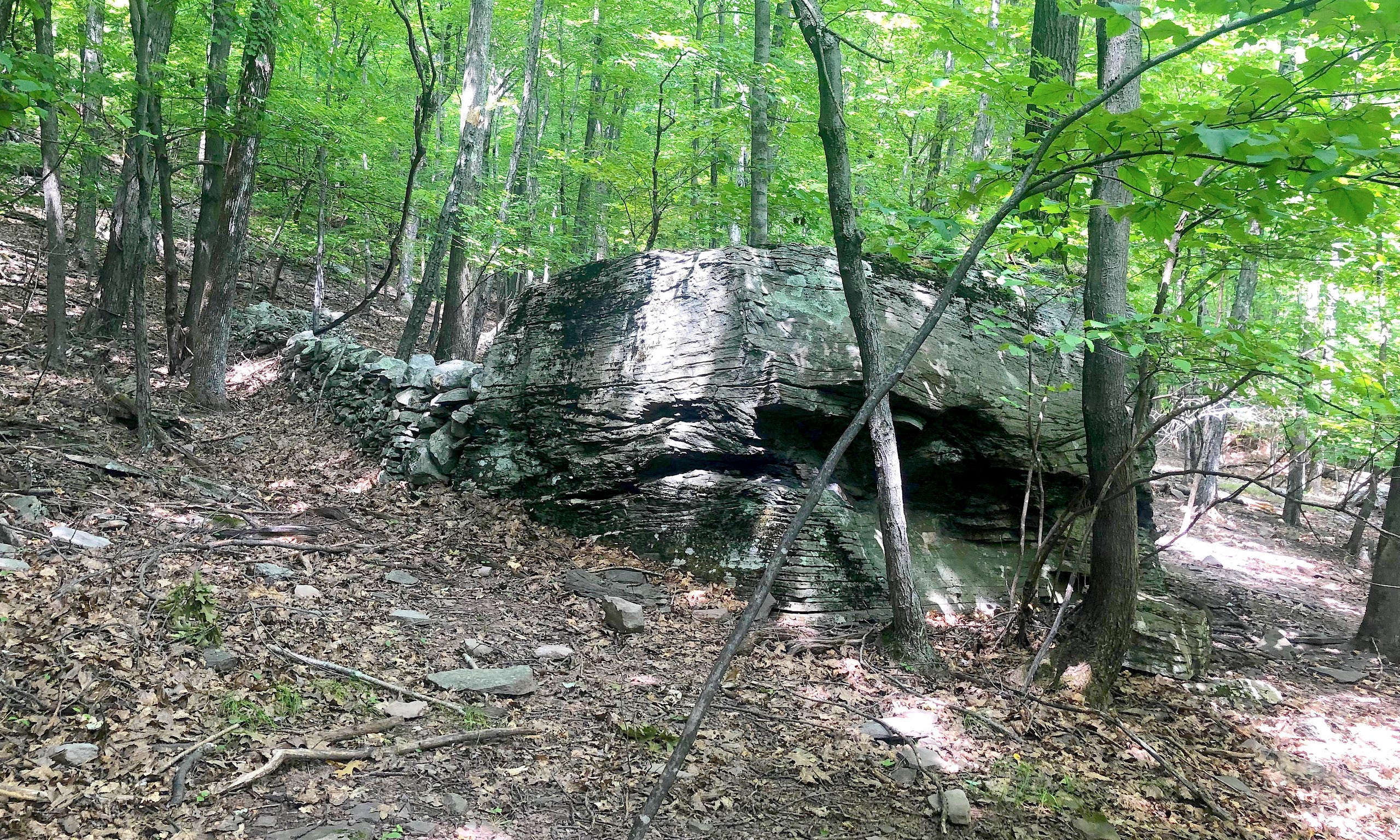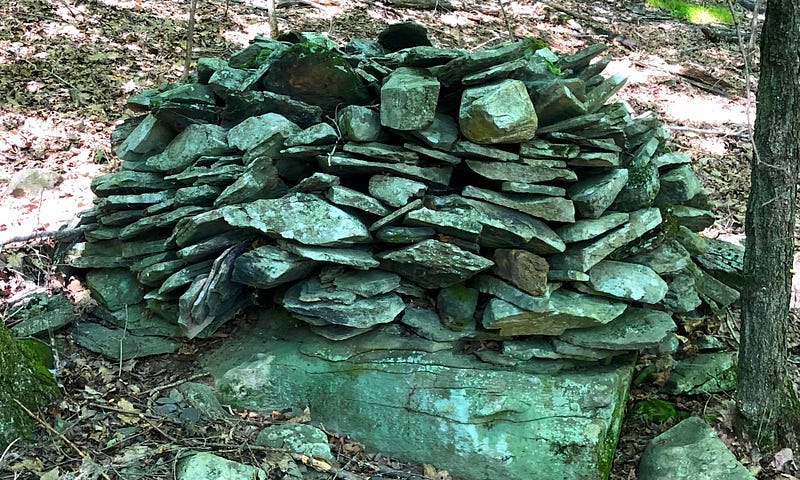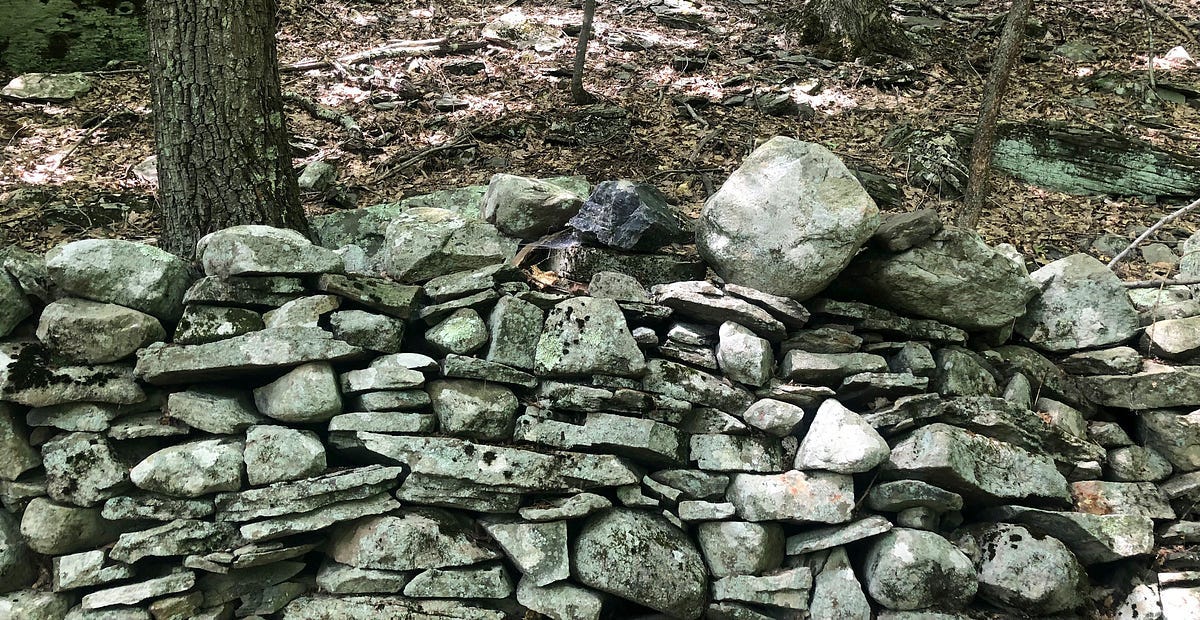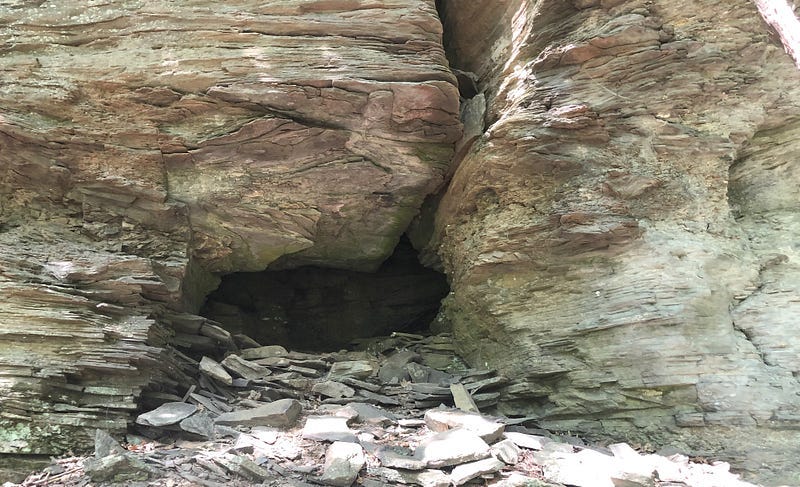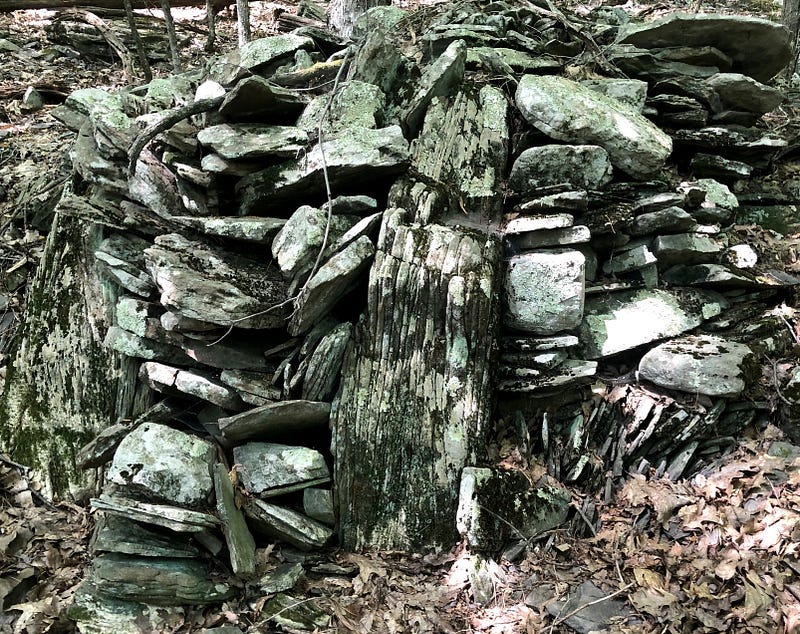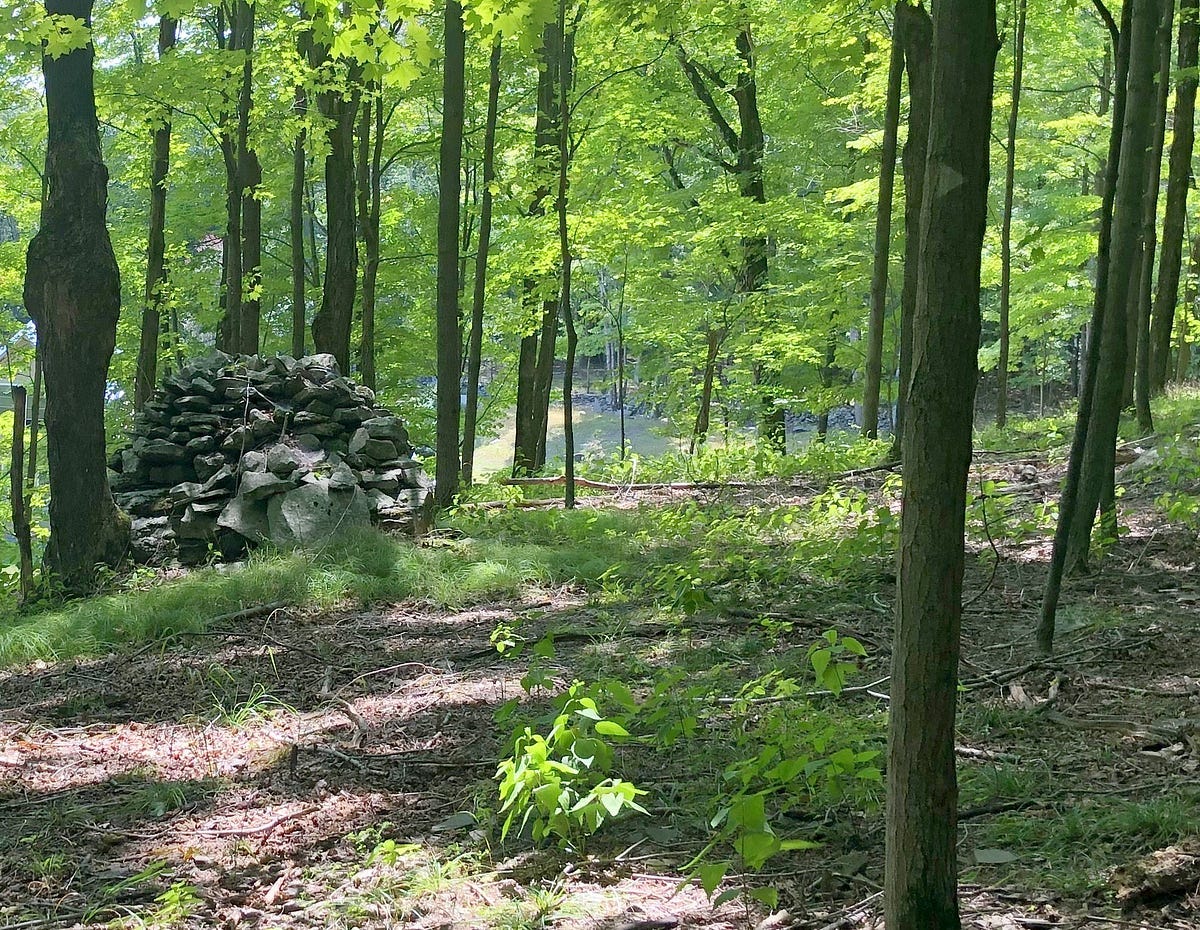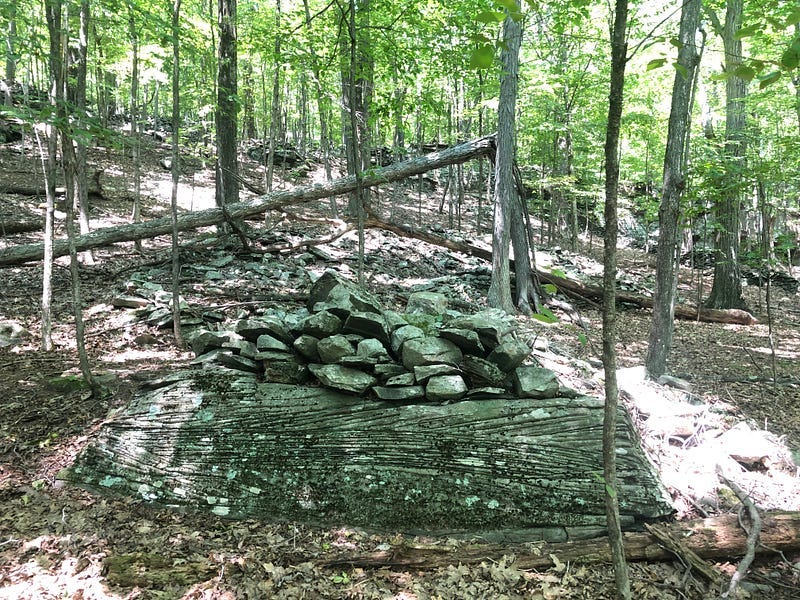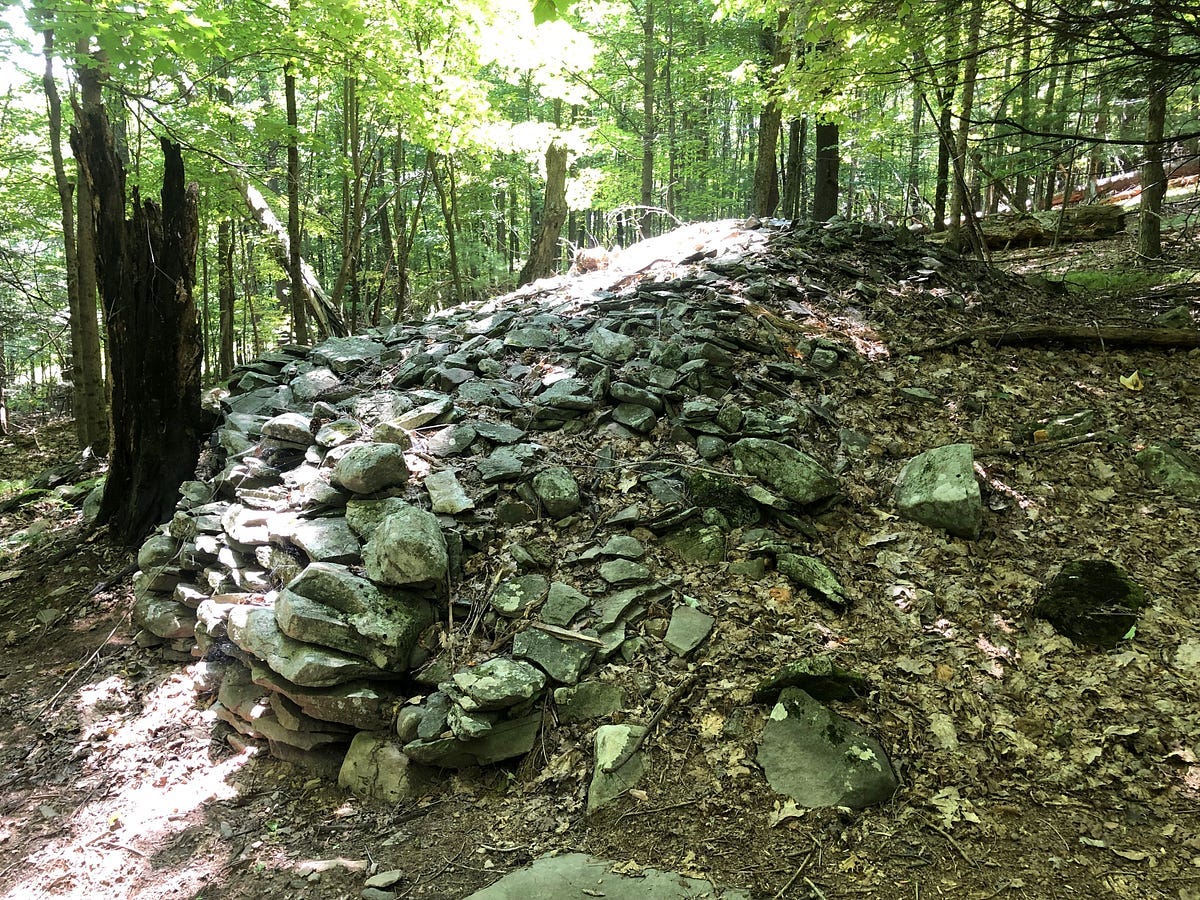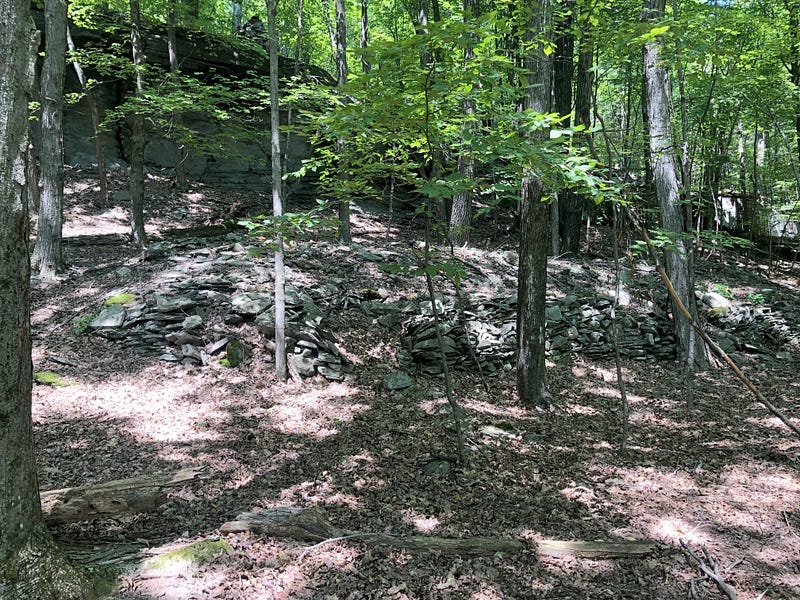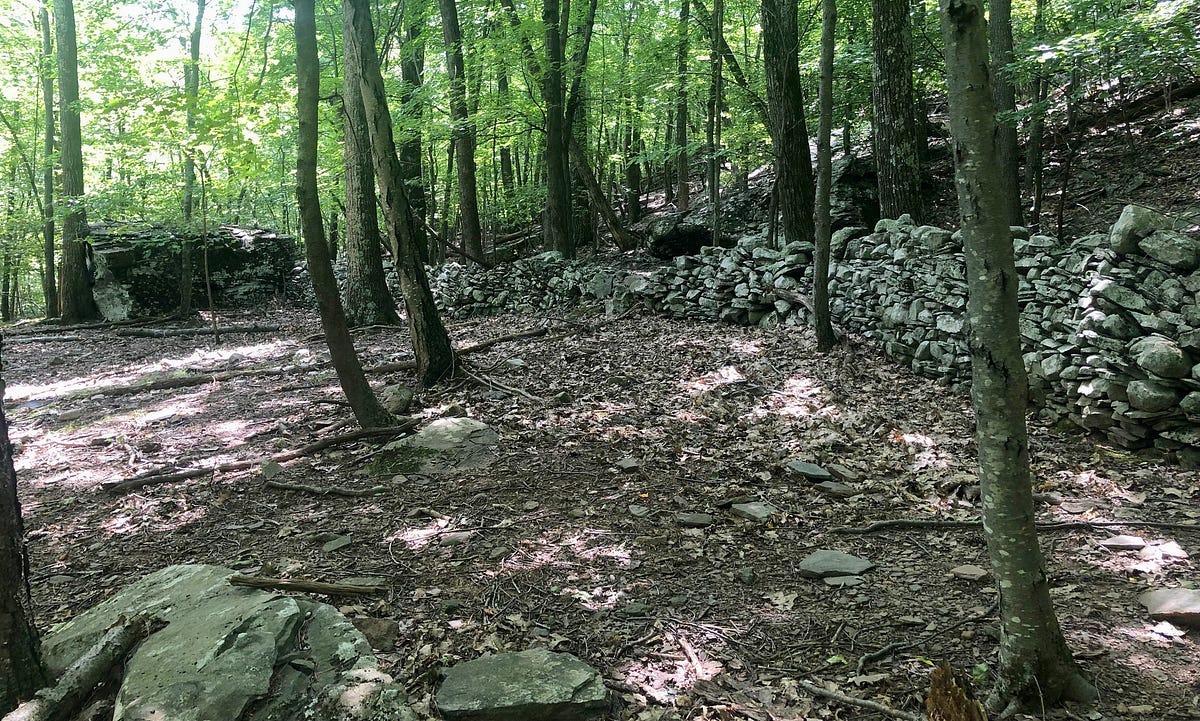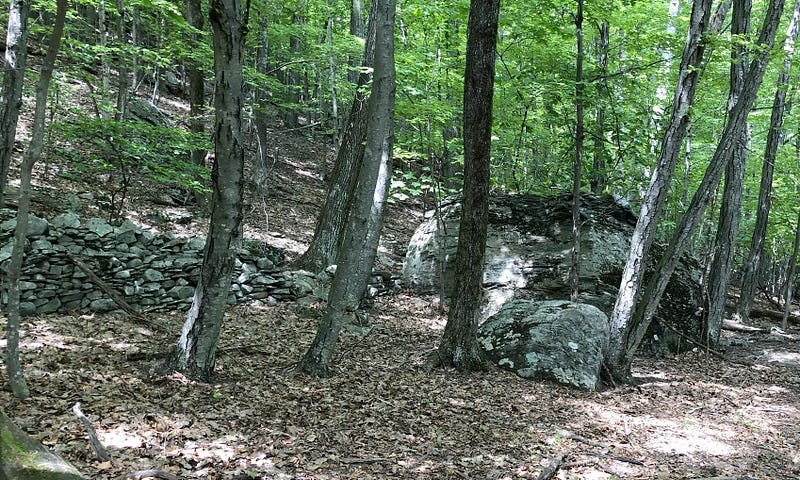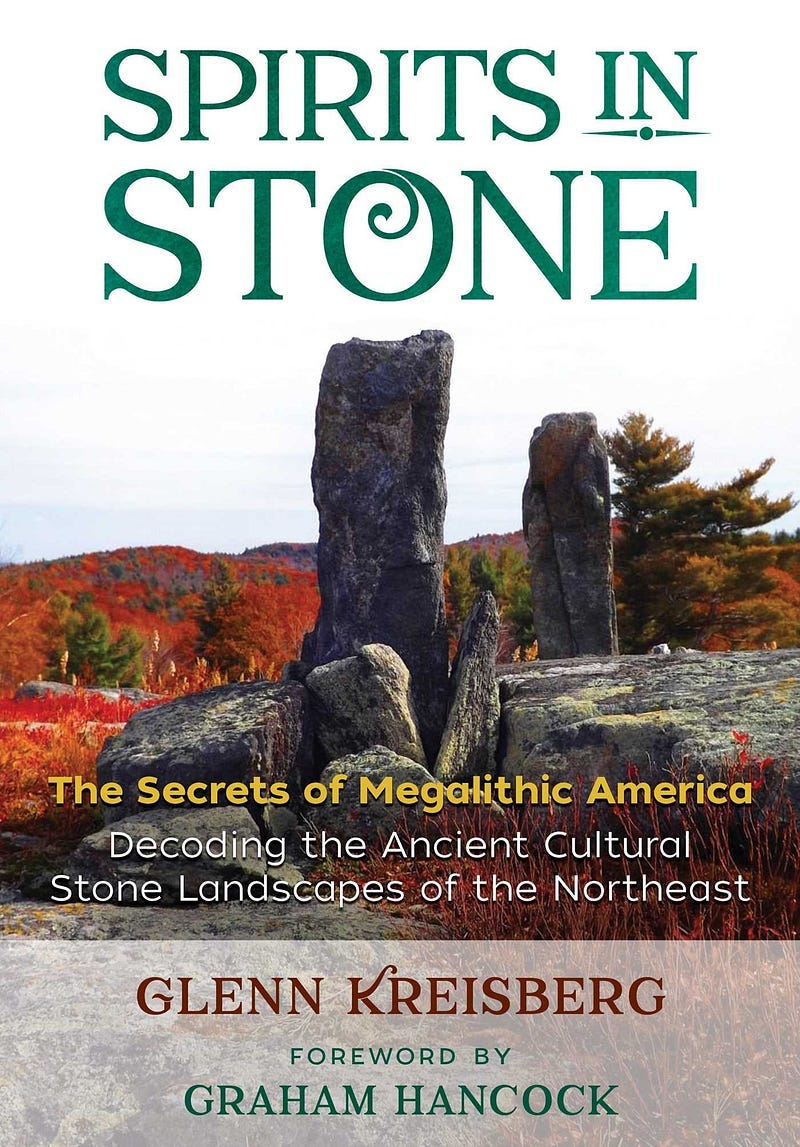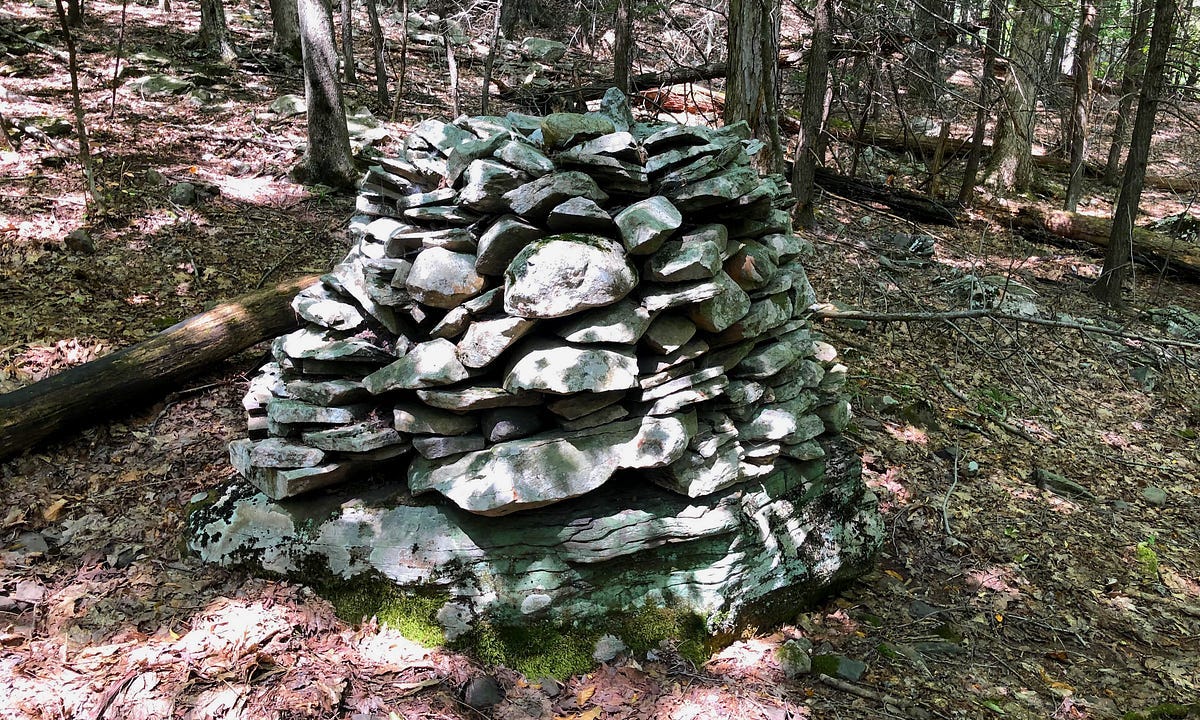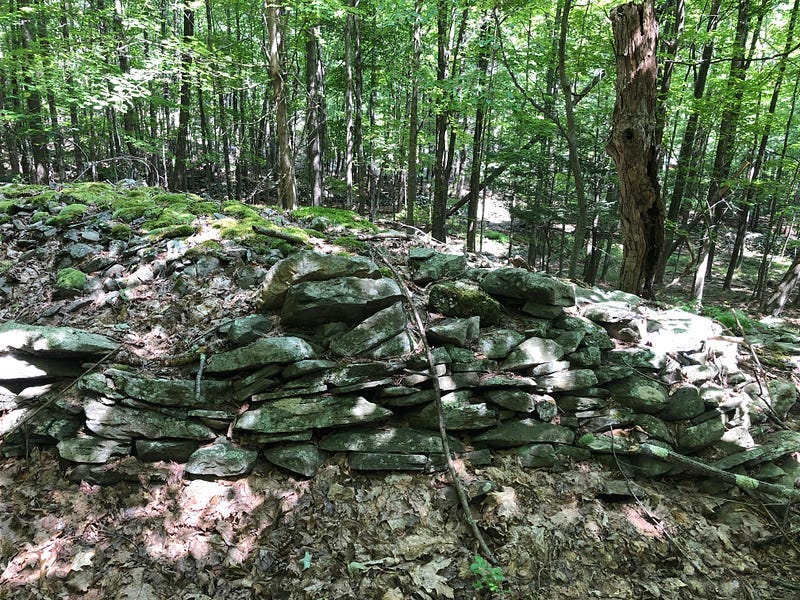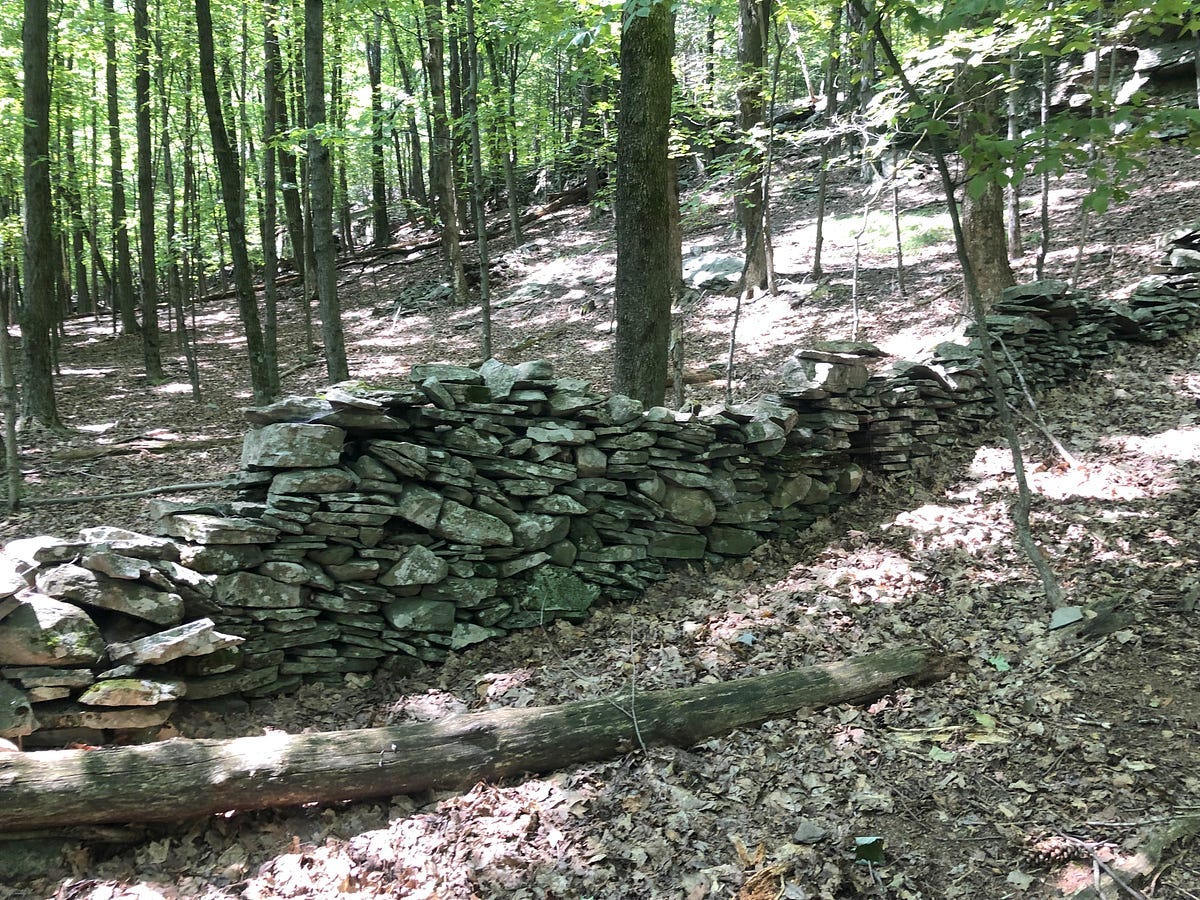A Ceremonial Stone Landscape in the Catskills
The Stone Effigy Rows and Manitou Hassanash (Cairns) of Lewis Hollow
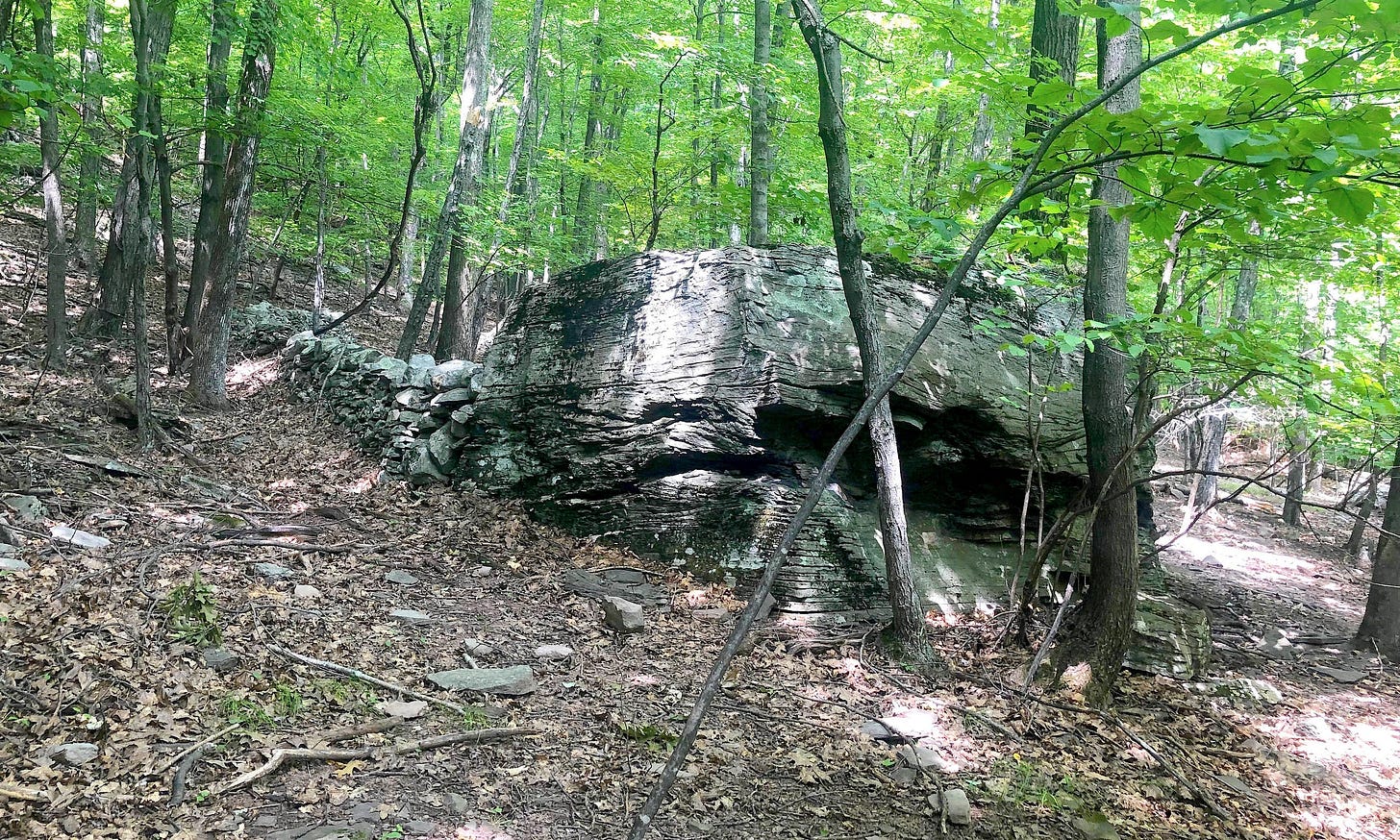
The Stone Effigy Rows and Manitou Hassanash (Cairns) of Lewis Hollow
As above, so below?
In Lewis Hollow, on Overlook Mountain in Woodstock, New York, intriguing stone features rise up with the ridge. Built over areas of high groundwater permeability, some of the stone assemblages may create a petraform mirroring a constellation in the sky above. This could very well be a sacred space — a Ceremonial Stone Landscape.
Native American Ceremonial Stone Landscapes are made up of stone features usually arrayed in astronomically significant and/or aligned patterns, reaching across distances short and long.
Clear sight lines interconnecting these prominent features of cultural significance allow for viewing of the rising and setting of the sun, moon, certain stars and constellations, and the Milky Way on significant dates.
The stoneworks are usually associated with subsurface water sources and emerging water features, like springs.
The stone rows are often serpentine and serpent-like in design.
Striving for balance by uniting sky elements and underground elements in stone constructs built in our element is, perhaps, one of the spiritual concepts behind these Ceremonial Stone Landscapes.
While we are not privy to the closest held spiritual beliefs of the Medicine Keepers of our North American indigenous peoples, we do know of their concept of a three-leveled universe, with the Sky World above, Our World on this earth, and the Under World below the ground.
Unlike Christianity, these divisions do not themselves carry moral judgments. Up is not good, down is not bad.
Thunderbirds of the Sky World do good and bad things, as do the Great Serpents of the Under World, for an over-simplified example.
Native Americans didn’t have a Hell nor a Devil down below until Puritanical Europeans arrived and decided the indigenous Spirit the local folks bargained with for Balance, for many Algonquian Hobomock, wasn’t ambivalent but was really the Evil One, Satan.
Completely wrong. Hobomock is The Interceder, a Bodhisattva, a Prometheus — a post-Resurrection Jesus. While the Great Spirit often seems aloof and detached, Hobomock can be bargained with, plead with — worked with. A Spirit who can interact with the Great Spirit, and Others, on Our Behalf.
But this Spirit is also a bit of a Trickster, so one must be honest, clear, and careful. Persuasive.
And best to be working towards Balance. For this Spirit also seems to be of The Tao and favors Balance. Like the Tao, like Water, this Spirit can come up from below, or down from the sky, or just hang with us on this level.
The diabolical character assassination of this complex figure by Europeans had catastrophic consequences. As an accessible — and impressible — Spirit, a great deal of Native American performative spirituality in ritual and many other forms involves supplications to, bargains with, and performances for, this Spirit.
European Christians told the Native Americans they were doing it wrong — all prayers should go to God, all to the Great Spirit, none to The Devil, nothing to this Hobomock.
At first, Europeans tried to convert Native Americans, even translated the Bible into Algonquian, but the early Indian Wars brought an end to most of those “Praying Indian” experiments. Besides, the missionaries were often disappointed because their “converts”, while worshipping the Great Spirit as God, somehow kept “lapsing” and still prayed to their “Devil” as well.
Besides… If God-fearin’ men could dismiss all Native Americans as Devil-worshippin’ Savages, it sure did make it easier to run them off and take their land, or just outright kill them. Didn’t it.
Indigenous sacred spaces, especially those connected to rituals, came to twistedly be regarded as centers of Devil-worship. We still hear echoes of this today in place names like Devil’s Hill, or Devil’s Den, or Devil This, That, or the Other Thing.
If they had discovered — as long-time site steward Glenn Kreisberg has — how the constellation Draco is apparently mirrored on the ground here by several of the largest of these stoneworks, they very well might have called this place Devil’s Hollow.
Glenn has been investigating and has helped to protect this site for many years. Mapping the size and location of these “cairns”, these possible Honoring Stones or Manitou Hassanash in Lewis Hollow, led Glenn to discover this archaeoastronomical correlation.
The pertaform also includes two prominent possible Serpent Effigy Rows. Twin serpent stone rows.
As the ridge rises in Lewis Hollow, these two apparent Serpent Effigy Rows face in opposite directions, tail-to-tail, several hundred yards apart along the ridge.
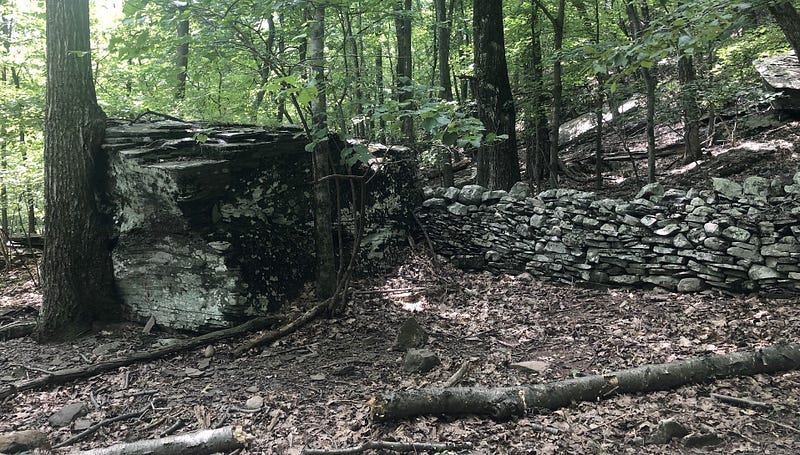
Their sinuous stone row tails undulate over areas of high groundwater permeability.
The large boulders do seem meant to be heads and appear altered to enhance that appearance. And if the giant boulders are their heads, the Serpents are indeed tail-to-tail, facing out.
According to Glenn, these two along with the six Great Cairns lower on the ridge create the petraform mirroring the constellation Draco. And Draco, or whatever it was the early Native Americans called the constellation above them, was prominent in the ancient sky over Overlook Mountain.
Much of Glenn’s work on Lewis Hollow, including the Draco correlation, can be found in his 2018 book Spirits in Stone, which also includes Researcher David Johnson’s groundwater permeability studies on how Native American stone structures are built upon areas of highest groundwater permeability.
Johnson has found this to be the case with the stone rows and stone assemblages at Lewis Hollow.
I’ve been trying not to call the stone assemblages “cairns” as much. In his presentations on Ceremonial Stone Landscapes, Retired Narragansett Deputy Tribal Historic Preservation Officer Doug Harris has said, as we’re not in Scotland nor Ireland anymore, we shouldn’t call these stone assemblages “cairns”, and instead suggests Manitou Hassanash — Algonquin for “Spirit Stones”. Glenn mentioned that Doug Harris toured Lewis Hollow and agreed the features here were likely Stone Prayers and Effigy Rows.
Several of the smaller Manitou Hassanash in Lewis Hollow could be Turtle effigies, or Coiled Serpent effigies. Much of the possible symbology here is tied to water.
Stoneworks have been found by Glenn in several Hollows around Overlook Mountain — and nowhere else on the mountain. The narrow valleys cutting into the mountainside are areas of high groundwater permeability. The springs and brooks of the hollows serve as the headwaters for larger streams and rivers flowing onward to the sea.
Why just the Hollows?
An indigenous group’s area of influence was often defined by waterways, lands sharing limits with watersheds. Perhaps the origin points of waters were held sacred, and Stone Prayers built in these places, to draw up the spirits of the Under World and draw down those of the Sky World, to draw upon their generative powers at the headwaters in Our World and create a place of Balance. Or Power.
This is speculation, of course, the linking of scant facts and possibilities. Informed by a sense of place gained in the experience of it — Lewis Hollow is a captivating space. A subjective assessment, to be sure, but many will find this ridge and its stones enchanting. There are impacts of later settlement all about, but a heart of ancient, sacred stonework beats at its core.
Lewis Hollow is not open to the general public, but there are tours from time to time led by Glenn under the auspices of the Overlook Mountain Center — http://OverlookMountain.org. Many thanks again to Glenn for taking the time to show me around this special and amazing area!


